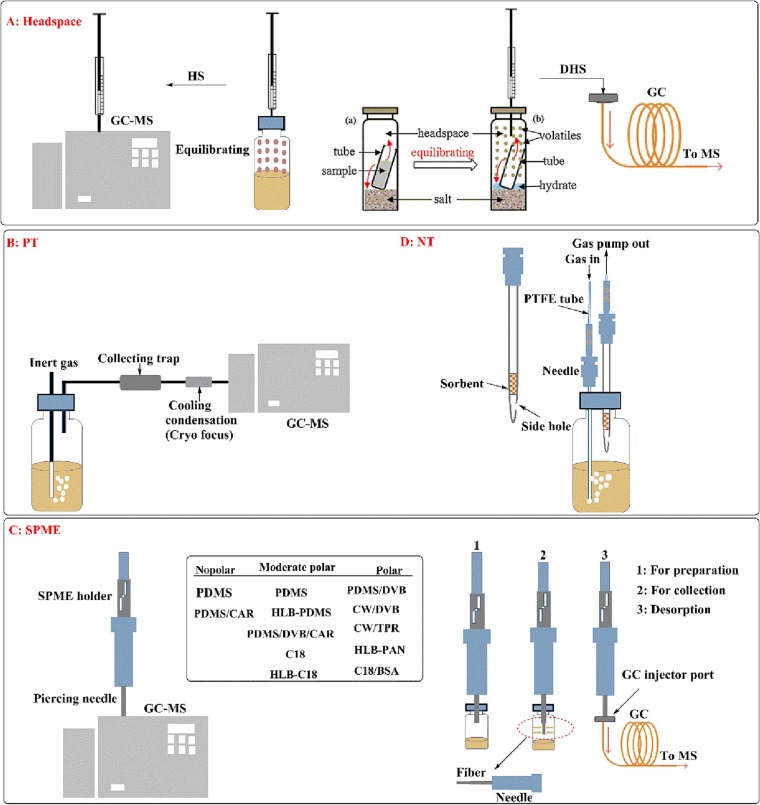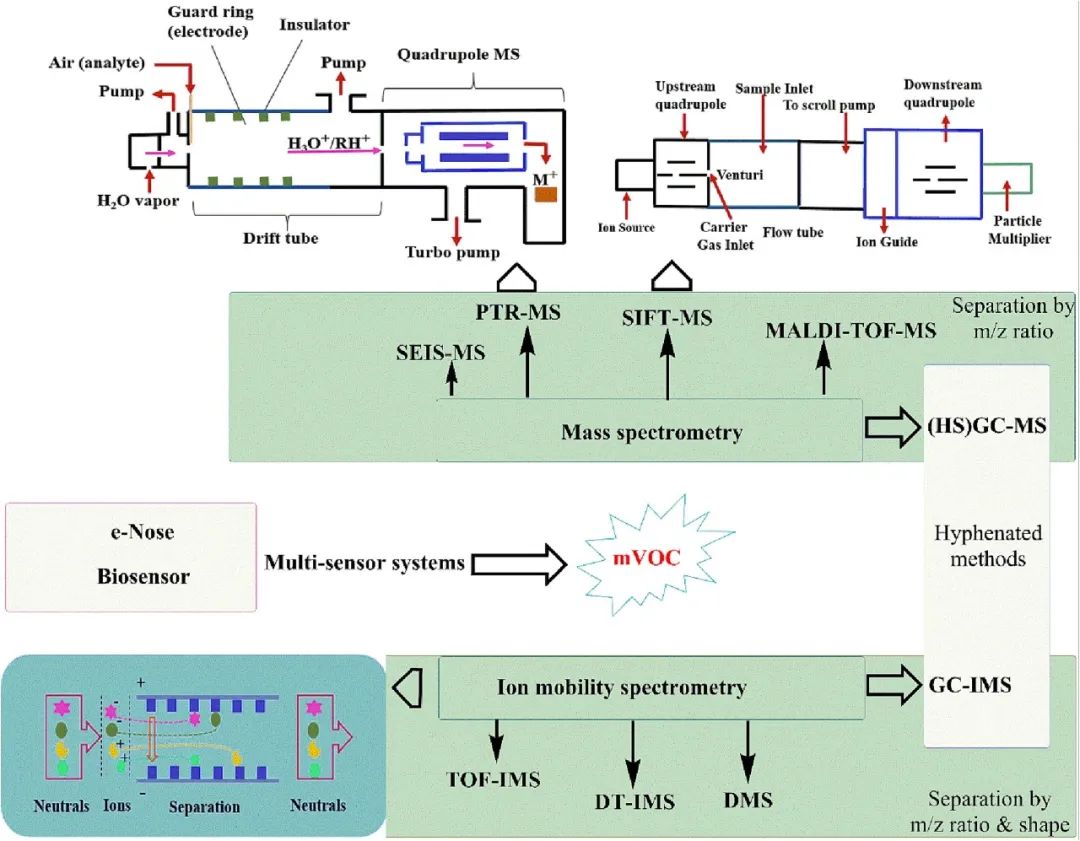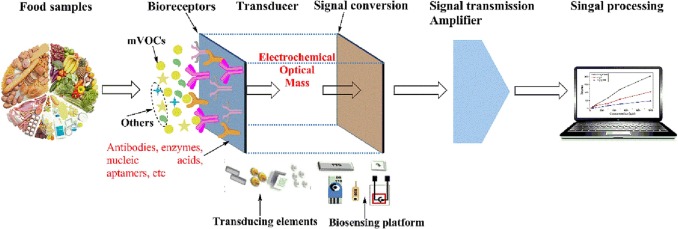Name:FAN Minxia
Tell:
Email:fanminxia@wbgcas.cn
Organization:Wuhan Botanical Garden
Advances of Volatile Organic Compounds Enlighten Microbial Contamination Detection
2023-04-18
Microbial volatile organic compounds (mVOCs), as the detection indicator of food microbiological contamination, have attracted a lot of attention. mVOCs are about 2000 kinds of volatile metabolites with different chemical properties, including alcohols, hydrocarbons, aldehydes, acids, ketones, ethers, esters, etc., produced by microorganisms in food during the metabolic process.
The low concentration, variety, and large polar span of mVOCs leads to the difficulty of detection. Therefore, efficient sample pretreatment technology, highly sensitive analytical instruments and reliable data analysis methods are the key to the enrichment and detection of mVOCs.
Researchers from Wuhan Botanical Garden summarized the types and mechanisms of mVOCs. At the same time, the sampling methods of mVOCs such as headspace, purge and trap, solid phase microextraction and needle trap were summarized, and the analytical methods of mVOCs (ion migration spectrometry, electronic nose method, biosensor, etc.) and their applications in the detection of microbial contamination in food were systematically reviewed.
Finally, it is pointed out that portable equipment, emerging new materials, high throughput and field detection, cost-effective and mass production of analytical instruments will become the promising direction of mVOCs detection in the future.
The study has been published in the Food Chemistry entitled "Advances in microbial analysis: Based on volatile organic compounds of microorganisms in food ". This research was partly supported by the Natural Science Foundation of Hubei Province. (Available online 15 March 2023)

The working principle of mVOCs sampling methods (Image by FAN Minxia)

Analysis methods of mVOCs in food (Image by FAN Minxia)

The basic principles of biosensor (Image by FAN Minxia)